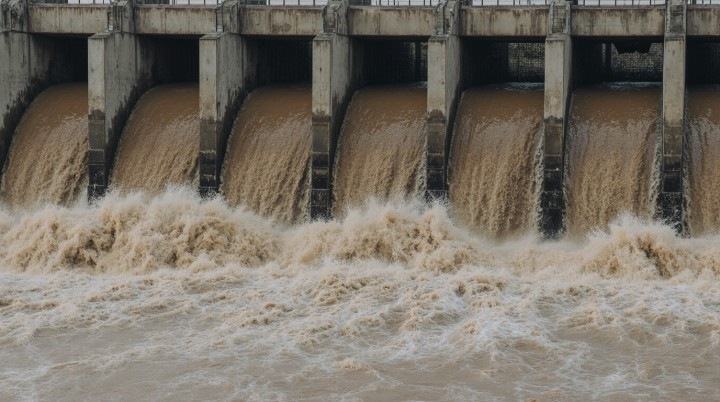Climate change puts Tajikistan’s hydropower industry at risk
A new scientific study, the results of which have just appeared in the international journal Hydrology, has revealed serious risks for Tajikistan’s hydropower industry, which is the backbone of the national economy. Despite short-term forecasts of an increase in electricity generation, the long-term consequences of climate change carry threats that can undermine the stability of the entire energy system of a country critically dependent on water resources.

The researchers focused on the Vakhsh River basin, the main waterway providing the operation of a cascade of hydroelectric power stations, including the famous Nurek Dam and the Rogun Dam under construction. Hydropower accounts for more than 90% of all electricity produced in Tajikistan, which makes the country extremely vulnerable to any fluctuations in river flow. Using modern digital modeling methods, including SRM snowmelt and MUSLE soil erosion models, the scientists analyzed the development of the situation under three climatic scenarios – optimistic, moderate and pessimistic.
The simulation results indicate a paradoxical trend. In the coming decades, an increase in the average annual temperature and an increase in precipitation is predicted, which will lead to accelerated melting of the glaciers and snowfields of the Pamirs feeding the Vakhsh. This, in turn, will cause a temporary increase in river flow and, as a result, an increase in potential electricity generation at Dams. However, this seemingly positive effect is only a temporary “bonus” from global warming, masking deeper and more dangerous processes.
The main threat identified during the study is progressive soil erosion. An increase in the intensity of precipitation, especially extreme downpours, will lead to the flushing of huge masses of soil from the mountain slopes into the river. Already, the eastern and southwestern regions of the Vakhsha basin are characterized as zones with moderate and severe erosion. In the future, this process will only intensify. Millions of tons of sand, silt and stones will move downstream, posing a direct threat to the expensive infrastructure of hydroelectric power plants.
The consequences of this process are multifaceted. Firstly, siltation of Dam reservoirs leads to a significant reduction in their useful volume. This reduces their ability to accumulate water for use in low-water periods and undermines the regulatory function, which is especially critical for stable power supply in winter. Secondly, solid particles in the water act as an abrasive, causing accelerated wear of turbines and other expensive Dam equipment, which leads to an increase in operating costs by 30-50% and shortening the service life of key plant components. The study showed that an increase in annual precipitation by just one millimeter can lead to additional losses in energy production, amounting to hundreds of thousands of kilowatt-hours per year due to increased erosion.
The problem – and this should be noted separately – goes beyond national borders. The Vakhsh is the largest tributary of the Amu Darya, a river of key importance for agriculture and water supply in neighboring countries, in particular Uzbekistan and Turkmenistan. Instability of river flow and problems with water resources management in the upper reaches can aggravate the already difficult interstate relations in Central Asia. Thus, the new study serves as a warning that the apparent abundance of water resources may turn out to be deceptive, and inaction in combating erosion and adapting to climate change threatens not only Tajikistan’s energy security, but also regional stability as a whole.
Alexander Eskendirov (Rivers.Help!)
Original (in Russian): Изменение климата ставит под удар гидроэнергетику Таджикистана


